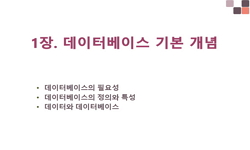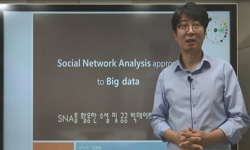The necessity of this study is as follows. A decrease in the number of newborns, an increase in the youth unemployment rate, and a decrease in the employment rate are having a fatal impact on universities. To help increase the employment rate of unive...
http://chineseinput.net/에서 pinyin(병음)방식으로 중국어를 변환할 수 있습니다.
변환된 중국어를 복사하여 사용하시면 됩니다.
- 中文 을 입력하시려면 zhongwen을 입력하시고 space를누르시면됩니다.
- 北京 을 입력하시려면 beijing을 입력하시고 space를 누르시면 됩니다.

A study on ways to make employment improve through Big Data analysis of university information public
한글로보기https://www.riss.kr/link?id=A107876161
- 저자
- 발행기관
- 학술지명
- 권호사항
-
발행연도
2021
-
작성언어
English
- 주제어
-
등재정보
KCI등재
-
자료형태
학술저널
-
수록면
174-180(7쪽)
- 제공처
-
0
상세조회 -
0
다운로드
부가정보
다국어 초록 (Multilingual Abstract)
The necessity of this study is as follows. A decrease in the number of newborns, an increase in the youth unemployment rate, and a decrease in the employment rate are having a fatal impact on universities. To help increase the employment rate of universities, we intend to utilize Big Data of university public information. Big data refers to the process of collecting and analyzing data, and includes all business processes of finding data, reprocessing information in an easy-to-understand manner, and selling information to people and institutions. Big data technology can be divided into technologies for storing, refining, analyzing, and predicting big data. The purpose of this study is to find the vision and special department of a university with a high employment rate by using big data technology. As a result of the study, big data was collected from 227 universities on www.academyinfo.go.kr site, We selected 130 meaningful universities and selected 25 universities with high employment rates and 25 universities with low employment rates. In conclusion, the university with a high employment rate can first be said to have a student-centered vision and university specialization. The reason is that, for universities with a high employment rate, the vision was to foster talents and specialize, whereas for universities with a low employment rate, regional bases took precedence. Second, universities with a high employment rate have a high interest in specialized departments. This is because, as a result of checking the presence or absence of a characterization plan, universities with a high employment rate were twice as high (21/7). Third, universities with high employment rates promote social needs and characterization. This is because the characteristic departments of universities with high employment rates are in the order of future technology and nursing and health, while universities with low employment rates promoted school-centered specialization in future technology and culture, tourism and art. In summary, universities with high employment rates showed high interest in student-centered vision and development of special departments for social needs.
동일학술지(권/호) 다른 논문
-
Maternal Nursing Online Practice Experience
- The International Promotion Agency of Culture Technology
- Kim, Jungae
- 2021
- KCI등재
-
- The International Promotion Agency of Culture Technology
- Cho, Seonahr
- 2021
- KCI등재
-
- The International Promotion Agency of Culture Technology
- Hong, Suk-Hwan
- 2021
- KCI등재
-
- The International Promotion Agency of Culture Technology
- Kim, Young-Jun
- 2021
- KCI등재




 ScienceON
ScienceON eArticle
eArticle






